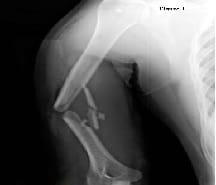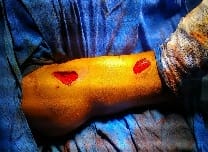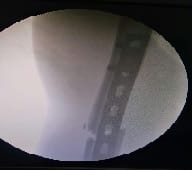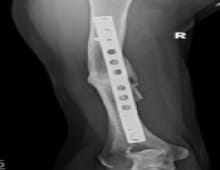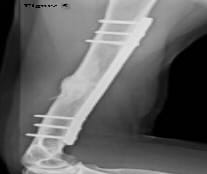Evaluation of results of minimally invasive plate osteosynthesis for humeral shaft fractures. A study involving 40 patients
Sharma A.1, Sharma G.2*, Bidoliya V.3, Nagina K.4
DOI: https://doi.org/10.17511/ijoso.2020.i01.05
1 Ashwini Sharma, Associate Professor, Department of Orthopaedics, Chirayu Medical College hospital, Bhopal, Madhya Pradesh, India.
2* Gourav Sharma, Assistant Professor, Department of Orthopaedics, Chirayu Medical College hospital, Bhopal, Madhya Pradesh, India.
3 Vinaydeep Bidoliya, Senior Resident, Department of Orthopaedics, Chirayu Medical College hospital, Bhopal, Madhya Pradesh, India.
4 Kirtiraj Nagina, Senior Resident, Department of Orthopaedics, Chirayu Medical College hospital, Bhopal, Madhya Pradesh, India.
Introduction: Fracture of humeral shaft account for roughly 3% of all fractures. Previously, non-operative treatment has been accepted modality of treatment. Three main operative techniques are in vogue for treating displaced humeral shaft fractures namely intramedullary nailing, conventional plating osteosynthesis (CPO) and minimally invasive plate osteosynthesis (MIPO). Material and Methods: 40 fractures of humerus shaft were treated with MIPO technique, in a prospective study between December 2015 and September 2017 at our institute. The cases were followed up for a minimum period of 2 years. Results: The average age was 41 years (23-71 years). Twenty-three (57.5%) were males and 17 (42.5 %) females. Twenty-nine cases (72.5%) had injury in their dominant arm. The mean surgical time was 45.5 minutes and the mean radiation exposure was for 85.3 seconds. Conclusion: MIPO is a better choice for treating humeral shaft fractures than CPO, though there is no significant difference between MIPO and CPO in terms of operative time, fracture union rate, and fracture union time.
Keywords: CPO- Conventional plate osteosynthesis, MIPO-minimally invasive plate osteosynthesis, Humerus shaft fracture
| Corresponding Author | How to Cite this Article | To Browse |
|---|---|---|
| , Assistant Professor, Department of Orthopaedics, Chirayu Medical College hospital, Bhopal, Madhya Pradesh, India. Email: |
Sharma A, Sharma G, Bidoliya V, Nagina K. Evaluation of results of minimally invasive plate osteosynthesis for humeral shaft fractures. A study involving 40 patients. Surgical Review Int J Surg Trauma Orthoped. 2020;6(1):27-34. Available From https://surgical.medresearch.in/index.php/ijoso/article/view/151 |


 ©
© 